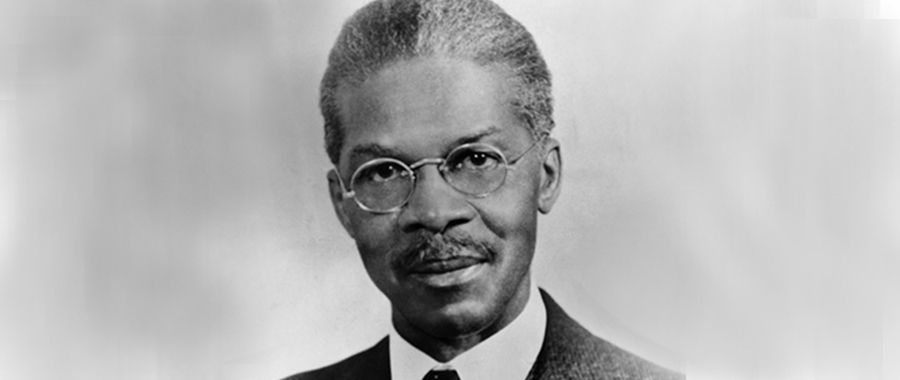In the annals of history, certain figures emerge as vanguards of justice and equity, and among them stands Louis Gregory, a monumental advocate for racial harmony and the ideals embedded within the Bahá’í Faith. Born into a context rife with racial strife, Gregory’s life epitomizes the unwavering commitment to the Bahá’í principle of unity in diversity. His tireless efforts encapsulated not merely the call for racial amity but a broader elucidation of the capacities inherent in human beings to transcend societal divisions.
Gregory’s journey commenced during a tumultuous era in the United States, marked by legal segregation and pervasive racial discrimination. The early 20th century was an epoch characterized by civil unrest as marginalized communities sought recognition and parity, yet Gregory dared to envision a society devoid of these artificial barriers. His fervent embrace of the teachings of Bahá’u’lláh, the founder of the Bahá’í Faith, provided him with an existential compass, guiding his ambitions toward the realization of an equitable social order.
The quintessential Bahá’í teaching of the oneness of humanity profoundly influenced Gregory’s worldview. This principle, articulated in various compartments of Bahá’í literature, posits that distinctions such as race, class, and creed should not dictate human interaction or societal development. Against this philosophical backdrop, Gregory’s relentless dedication to racial unity becomes not just a personal endeavor but a profound reflection of a universal truth—the fundamental equality of all people.
To comprehend Gregory’s paradigm-shifting legacy, one must delve into the socio-political climate of his time. The Jim Crow laws encapsulated a landscape that not only legitimized segregation but perpetuated stereotypes and societal prejudices. In stark contrast, Gregory’s actions ignited dialogues that underscored shared humanity instead of divisiveness. His participation in ecumenical religious activities and interracial gatherings fostered an atmosphere wherein dialogues about race could occur, puncturing the veil of ignorance that often shrouded such discussions.
Gregory’s rapport with prominent figures, including women like his wife, who was instrumental in his pursuits, illustrates an essential aspect of his journey. The collaboration across gender lines highlights another Bahá’í teaching: the equality of men and women. This intersection of gender equity and racial unity further cements Gregory’s stature as a holistic thinker and practitioner. By embracing these dualities, he challenged both racial and gender norms, exemplifying progressive ideals that transcended conventional wisdom of his time.
His scholarly pursuits cannot be overlooked; Gregory was not merely a practitioner but also a thinker. He articulated his vision in numerous speeches and writings, imbuing them with the philosophical underpinnings of the Bahá’í Faith while imbibing pragmatic considerations for the socio-political context of his audience. His capacity to engage in nuanced discourse made complex ideas accessible to laypersons, fostering a burgeoning sense of agency among those often left voiceless.
Intriguingly, Gregory’s tireless advocacy was rooted in a profound sense of hope and resilience. He understood that the struggle for racial equality was not merely a political campaign but a transformative journey necessitating collective action. His insistence on dialogue over discord, listening over lecturing, revealed deeper motivations—an inherent faith in the potential for societal evolution. Thus, every step he took toward racial amity was imbued with a sense of purpose that resonated beyond his immediate environment.
Moreover, the implications of Gregory’s work continue to echo in contemporary society. As discussions about racial justice and equality regain urgency, his legacy serves as a touchstone for individuals and communities grappling with the complexities of identity and equity. The principles he championed—justice, unity, and compassion—remain relevant in dialogues concerning racial dynamics today. Gregory’s approach to social reform underscores not only the importance of addressing inequities but also the necessity of embracing a global ethos of interconnectedness.
One must acknowledge the enduring historical context of the Bahá’í Faith, which uniquely positions its adherents as agents of change within their communities. Gregory’s approach reflected the belief that spiritual teachings could inform and transform societal structures. This integration of the spiritual and the temporal marks a paradigm shift in how we perceive activism; it necessitates a philosophical framework for mobilizing social change, rather than merely reactive measures.
Indeed, the fervor with which Louis Gregory pursued racial amity serves as an enduring testament to the power of conviction infused with exemplary action. His life exemplified a rare amalgamation of philosophical inquiry and practical application, whereby his ideals manifested into tangible efforts that catalyzed societal betterment. Individuals today are inspired to reflect on his legacy, drawing lessons for contemporary advocacy and recognizing the interconnectedness of their struggles with the broader tapestry of human experience.
In conclusion, the narrative of Louis Gregory is inextricably linked to the broader ethos of the Bahá’í Faith, characterized by an emphatic commitment to racial amity. His tireless work transcends mere historical documentation; it serves as an illuminating guide for current and future generations. By weaving together the threads of justice, unity, and hope, Gregory’s life story compels us to re-evaluate our roles within the collective human narrative and to contribute toward the realization of a just and unified society. With each reflection on his pursuit of racial amity, we recognize the imperative to elevate our consciousness and strive for a world where unity among diversity becomes not only an aspiration but a lived reality.
